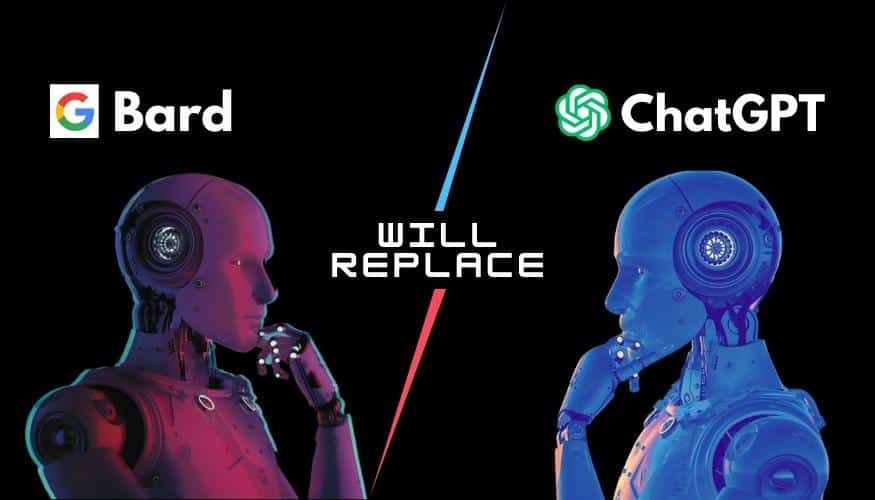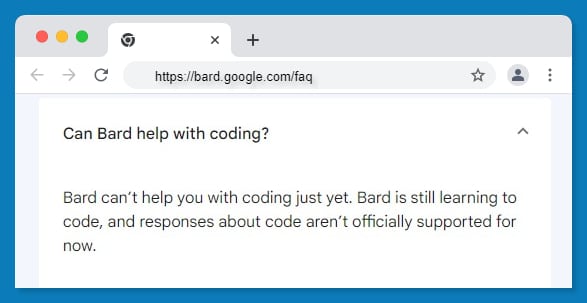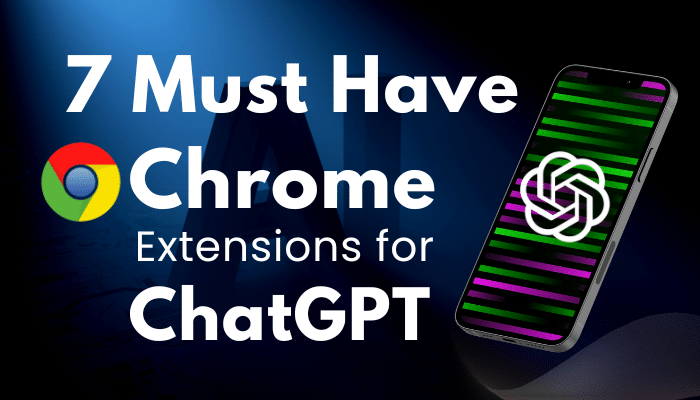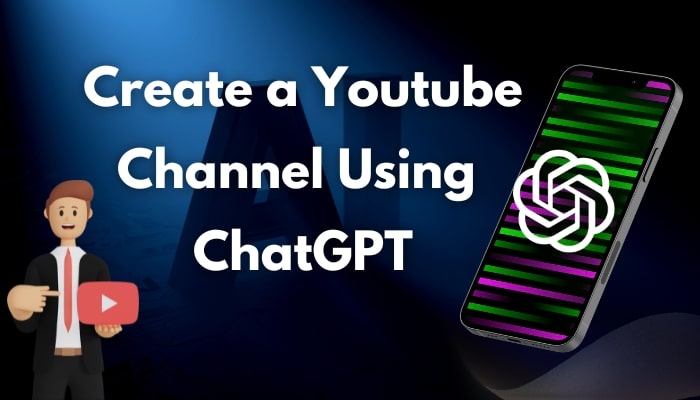
The rise of artificial intelligence has developed significant advancements in various fields, including natural language processing (NLP). Among the various AI language models, two stand out as giants in the industry: Google’s BARD and OpenAI’s ChatGPT. In this article, we will walk deeper into the capabilities of these two language models and compare their strengths and weaknesses.
You might interested in: How ChatGPT is a wonderful tool for employers?
Introduction to Google Bard and ChatGPT
Before we compare these two language models, let’s take a closer look at what they are and how they work.
Google BARD, which stands for “Big Ass Roaming Dataset”, is a language model developed by Google. Bard runs on Google’s large learning model Language Model for Dialogue Applications (LaMDA), which promises to be updated with new information over time. It was trained on a dataset of over 150 GB of text data, making it one of the largest models of its kind. BARD is particularly suited for question-answering tasks, such as answering questions on a specific topic or providing answers to customer support queries.
Only offered to select markets in the U.S. and U.K., users can sign up for the waitlist to gain access to Bard. In an effort to separate the chatbot from its popular search engine, Google has created a standalone website for Bard.
On the other hand, ChatGPT is a language model developed by OpenAI. It is dominating the AI field in 2023. It is part of the GPT (Generative Pre-trained Transformer) family of models and was trained on a massive dataset of text data from the internet. ChatGPT is particularly suited for text-generation tasks, such as writing essays, generating news articles, and creating product descriptions.
Key Features of Google Bard:
Google Bard is an AI-powered tool that is designed to help users generate creative ideas, lyrics, and other written content. It has several features and capabilities that make it a powerful tool for writers and content creators. Here are some of the key features of Google Bard:
Interactive Conversations:
Google Bard is capable of having interactive conversations with users. This means that it can understand and respond to natural language queries and prompts. Users can ask Google Bard to generate ideas or content related to a specific topic or theme, and it will provide relevant suggestions.
Knowledge and Expertise:
Google Bard is powered by Google’s massive database of information and expertise. It has access to a vast amount of data and knowledge on a wide range of topics, which it can use to generate content suggestions and ideas.
Integration with Google Services:
Google Bard is integrated with other Google services like Google Docs, Google Sheets, and Google Slides. This means that users can seamlessly transfer their generated content to these platforms for further editing and refinement.
Key Features of ChatGPT:
ChatGPT is a large language model developed by OpenAI. It is designed to understand and generate natural language responses to a wide range of queries and prompts. Here are some of the key features of ChatGPT:
Language Proficiency:
ChatGPT is trained on a massive dataset of human language. This means it has a high level of language proficiency and can understand and respond to natural language queries and prompts.
Creative Writing:
ChatGPT is capable of generating creative writing in a variety of styles and genres. This makes it a useful tool for writers and content creators looking for inspiration or needing help generating ideas.
Coding:
ChatGPT can also be used for coding tasks, such as code generation, bug fixing, and code completion. It has been trained on a large dataset of code snippets and can generate code that is syntactically correct and functionally useful.
Bonus: Will ChatGPT replace programmers?
BARD vs ChatGPT: Major Differences
Coding and Programming
ChatGPT:
- ChatGPT has gained popularity among those who need coding assistance.
- It can write complex code in different programming languages and debug multiple instances of code.
- Users on Social Media have used ChatGPT to create games and build chatbots.
Google Bard:
- In contrast, Google’s AI chatbot Bard doesn’t currently support coding.
- According to Google’s FAQ page, Bard cannot help with coding responses.

In summary, ChatGPT appears to have an advantage in coding as it can write and debug code efficiently.
Giving Multiple Answers
ChatGPT:
- ChatGPT typically provides one response to a question, but users can request multiple answers.
- While ChatGPT can offer various versions of its responses, some users may find the default response repetitive.
Google Bard:
- In contrast, Google’s AI chatbot Bard generates multiple drafts of an answer, and users can choose the most suitable one.
- Each draft may have a different source for accuracy, and users can mix and match them to create a comprehensive response.
- The ability to choose from multiple answers is a significant difference between Bard AI and ChatGPT.
- This feature is useful as a single response may not always be the most precise or relevant.
Holding Conversation
ChatGPT:
- AI chatbots can remember previous interactions with users to answer follow-up questions.
- ChatGPT can remember up to almost 3,000 words from the current conversation but cannot access past conversations.
- ChatGPT still does a decent job of maintaining the conversation’s flow.
Google Bard:
- In contrast, Google’s AI chatbot Bard currently struggles with holding context and can provide a different answer to a follow-up question about a specific topic.
- Google has limited Bard AI’s ability to retain context intentionally for now, but this may change as the bot continues to learn.
Overall, ChatGPT seems to have an advantage in conversation retention, making it the winner in this category when compared to Bard AI.
Up-to-date Information
ChatGPT:
- One of the main limitations of ChatGPT is its lack of Internet access. Despite using the latest GPT-4 model, ChatGPT still lacks access to the Internet, which limits its knowledge to a dataset that only includes information up to September 2021. This means that ChatGPT may make factual errors when compared to AI chatbots like Microsoft Bing AI, which have access to the Internet.
Google Bard:
- Google Bard has real-time access to the Internet, allowing it to search for and provide up-to-date information. This gives Bard AI a significant advantage in fetching accurate information without major errors. Similar to Bing, Bard AI also includes the URLs of its sources at the bottom of its responses, although this is not always the case.
Therefore, if you’re looking for a bot that can provide the latest information, Google Bard AI wins in the Bard vs ChatGPT comparison.
Language Support
ChatGPT:
- ChatGPT has continued to expand its language capabilities with the latest GPT-4 language model supporting over 26 languages.
- These languages include popular ones such as French, Spanish, Arabic, and Mandarin, as well as other less widely spoken languages.
- With this expansion, ChatGPT is becoming an increasingly versatile and useful tool for people all around the world.
Google Bard:
- In contrast, Google Bard is currently limited to only US English.
- While Google has expressed intentions to expand Bard’s language capabilities, the bot is still only able to communicate effectively in English.
- However, it is worth noting that Google’s machine-learning capabilities are among the most advanced in the industry, and it is likely that Bard will continue to improve over time.
Content Creation
ChatGPT:
- ChatGPT can summarize long texts with some accuracy and highlight key passages within the text.
- It may struggle with long and detailed texts or in-depth analysis of poetry.
- It can be trained to mimic the style and grammar of an original piece of material, which is useful for consistency in social media posts and email marketing.
- A big strength of ChatGPT is its ability to translate English into other languages, which is a step forward in improving translations.
Google Bard:
- Google Bard is supposedly better at creative writing by offering thematic, word, and phrasal suggestions to help writers come up with ideas.
- It can provide feedback on aspects such as setting, style, tone, and overall structure for writers.
- Google Bard lacks many of the features of ChatGPT, but it can make it easier for writers to find synonyms, alternative phrasings, and spot overused words and terms.
So, ChatGPT is definitely winning this category.
Plagiarism
ChatGPT:
- ChatGPT has a plagiarism checker and is ahead of Google Bard in this regard.
- However, ChatGPT’s plagiarism checker is not fully reliable yet and can incorrectly label human-written text as AI-written.
- The feature is important for detecting automated misinformation campaigns, but OpenAI warns that it should not be solely relied on to condemn something as plagiarized.
- The classifier is more accurate with texts above 1,000 characters and only works well in English.
- AI systems can also be programmed to avoid the patterns that plagiarism checkers monitor.
Google Bard:
- Google Bard currently doesn’t have any built-in plagiarism mechanism.
So, there’s also ChatGPT is definitely winning.
Price Plans
ChatGPT:
- ChatGPT offers a free basic version, but its main version (ChatGPT Plus) costs $20/month. Subscribers can enjoy priority access to new features, faster responses, and access to ChatGPT during peak times.
Google Bard:
- On the other hand, Google Bard is entirely free to use.
So, it’ll be a huge benefit for us to use the free version of Google Bard and here Bard is the winner.
Speed and Efficiency
In terms of speed and efficiency, both models are quite similar, with Google BARD being slightly faster in some cases. However, it is worth noting that both models require a significant amount of computational power to operate effectively.
Potential Implications of Bard’s Release on ChatGPT
The release of Bard has raised questions about whether it will eventually replace ChatGPT. While both chatbots have similar capabilities, Bard has several unique features that could make it a more appealing choice for users. Additionally, Google’s vast resources and reach could allow Bard to quickly surpass ChatGPT in popularity and functionality.
However, it is important to note that ChatGPT is already an established and highly popular chatbot. It has been trained on vast amounts of data and has a well-established reputation for accuracy and reliability. Additionally, OpenAI is constantly working to improve ChatGPT’s capabilities and expand its functionality.
The Future of Language Models
So, which language model will eventually come out on top? While it’s impossible to predict the future with certainty, there are some trends that suggest Google Bard may have the edge. For one thing, Google has invested heavily in the development of this model and has a larger team of researchers working on it. Additionally, Google Bard’s ability to generate creative writing is a unique feature that sets it apart from other language models. However, it’s important to note that ChatGPT still has a lot of potentials and may continue to improve in the coming years.
Ending Thoughts
In conclusion, while the release of Bard has raised questions about the future of ChatGPT, both chatbots have their unique advantages and capabilities. ChatGPT is a highly accurate and versatile chatbot that can answer a wide range of questions and provide language translations, among other features. Bard, on the other hand, is more focused on providing personalized recommendations and engaging in more natural conversations with users however, it has more limitations than ChatGPT this time. But remember that, google knows how to compete!
Regardless of which chatbot users choose, the future of AI chatbots looks promising, with many exciting developments on the horizon. Because if you don’t upgrade your tech, market will put you in the basket.
Frequently Asked Questions:
Yes, both models can be used together to achieve even better results. For example, ChatGPT can be used to generate content, which can then be fed into Google BARD for question-answering tasks.
Google Bard AI is better for providing the latest information, as it has real-time access to the Internet.
According to Google Bard’s FAQ page, Bard does not have the ability to assist with coding responses yet.




